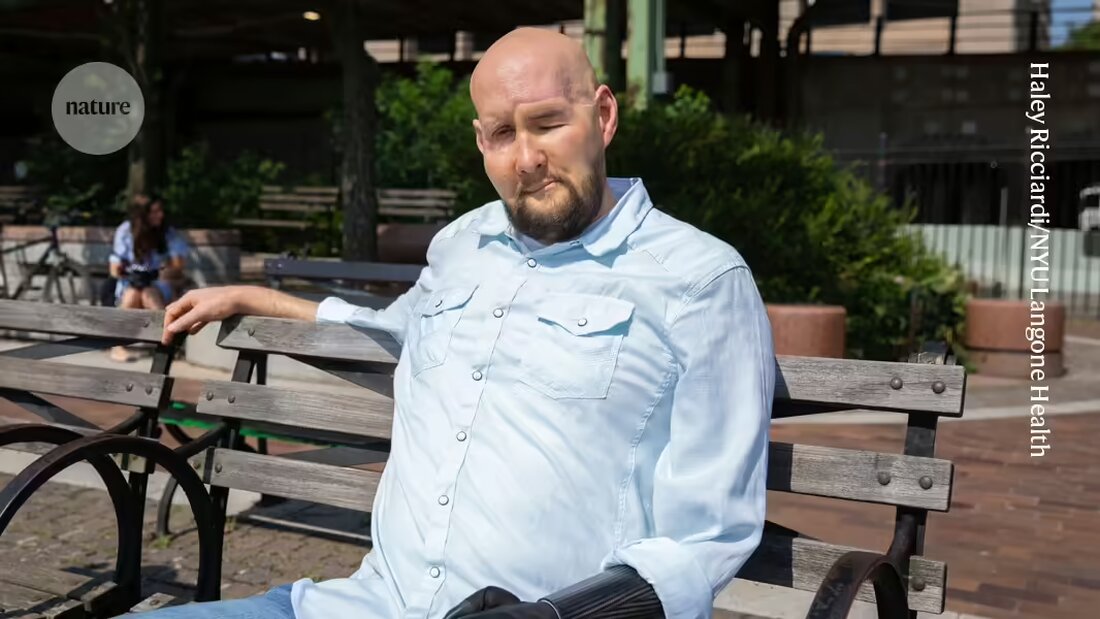First complete eye transplantation in the world: the innovations they made possible
First complete eye transplantation in the world: the innovations they made possible
For Aaron James it is still difficult to understand that he has received the first successful all -eyes transplantation in history. "It is simply overwhelming to be part of something like that," says the 47-year-old father from Hot Springs, Arkansas.
in 2021 James was injured in an electrical accident while working as a high -voltage folder. He lost his dominant left arm, his left eye, his chin and his nose. For two years he could not eat solid food, do not taste, smell or speak normally.
In May 2023, he received the first all-eye and facial transplantation at New York University (NYU) Langone Health in New York City. More than a year after the operation, his transplanted eye remains healthy- The retina even reacts to light-but James cannot see from him.
"It is a technically brilliant operation," says the surgeon Bohdan Pomahač from the Yale School of Medicine in New Haven, Connecticut, who carried out the first full facial transplant in the USA in 2011, but was not involved in James' case. "The authors shifted the limits of innovation." The operation is described today in jama
The doctors had never expected James to regain eyesight in the transplanted eye, says Daniel Ceradini, a surgeon at the Nyu Langone Health and the first author of the study. The reason for this is that there was no evidence that the could successfully reconnecten with James ’brain. The optic nerve, which sends information from the retina to the brain, is part of the central nervous system, and Puzzle . But the operation brings the researchers a step closer to an eye transplant that could one day restore vision, which, according to Ceradini, is considered a "holy grail".
james needed a facial transplant and was ready to take the additional risk of an eye transplant to help future organ recipients. "I would take immunosuppressants for the facial transplant anyway," he says. "Everything we could do was to win something."
exercise, exercise
The surgical dissection of the eye is so complex that the team has practiced lease at least 15 times, says Ceradini.
Many scientific progress came together to enable the operation. The team "essentially developed a new operation based on existing principles," says Pomahač. The blood supply is carried out by a different artery than the one that supplies the remaining parts of the face. To ensure that the eye donated does not stay without blood supply, the surgeons combined the artery, which provided the eye of the donor, with a branch of the outer carotid artery of the donor, a large container that begins near the neck. The entire structure was then transplanted in James, a procedure that has never been carried out in humans. "They found out how to restore an eyeball in such a way that the blood flow is not damaged," says Pomahač.
Another progress was the production of a sentence of 3D-printed surgical stencils, which made it possible for the surgeons to find out the right amount of donor bones that James' face needed. The stencils were based on computer tomography scans of the faces of donors and James and were created on their faces during the operation. "The dispenser fits exactly like a precisely precisely precisely piece of the puzzle," says Ceradini.
After all of this, nobody knew how the transplanted eyeball would behave, says Ceradini: "He shrinks? Does the retina work?"
a feeling of itch
When James woke up from the operation, he first noticed the smell. After two years without Summary. Although the smell was "hospitalized", he says with a laugh.
After about a week and a half he saw his new face for the first time. Even now, if he passes on a mirror, he remains fascinated. He no longer carries the blindfold and the mask when he goes out as he did before the transplant. He is thrilled to let a beard grow again.
The transplanted eye cannot move or see, but has normal pressure and good blood supply, and the retina reacts to light. James can feel a feeling of itch deep in the eye socket, and the feeling around the eye begins to return. The peripheral nerves around the eye grow back by chance, says Ceradini.
restore vision
It is unclear whether an eye transplant in which the recipient regrains eyesight will be feasible one day. Ceradini believes that it is "an achievable goal in the near future". Pomaha's disagreement. However, both agree that the lack of crucial element to achieve this is to find out how to regenerate the optic nerve. Pomahač believes that this will be unlikely. "It could happen if we find out the regeneration of the brain or spinal cord," he says.
Nevertheless, James, his wife Meagan and her 19-year-old daughter Allie are in good spirits, which means to tease each other. Allie recently posted on Tikkok and evaluated the things her father did, Meaghan recalls. "100/10, wrote medical history," posted Allie. "Still bare, however."
-
Ceradini, D. J. et al. jama https://doi.org/10.1001/jama.202601 (2024).


Kommentare (0)